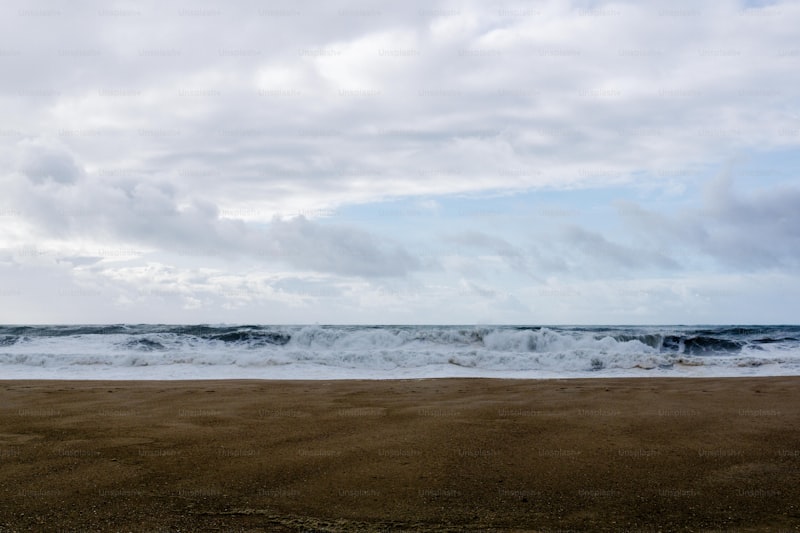Capturing the Perfect Moment: Photoshoots Amidst the Waves
Creating Stunning Images with Photoshoots Amidst the Waves
When it comes to photography, few backdrops are as breathtaking as the ocean waves crashing against the shore. The combination of shimmering water, soft sand, and dramatic sky creates the perfect setting for unforgettable photoshoots. Whether you're a professional photographer or an amateur looking to enhance your skills, this guide will provide you with the essential tips and techniques for executing successful photoshoots amidst the waves.
Understanding the Best Time for Photoshoots
Timing is crucial when planning a photoshoot on the beach. The play of light during different times of the day dramatically affects the quality of your photos. Here are some ideal times for capturing stunning images:
| Time | Characteristics | Best for |
| Golden Hour (Sunrise/Sunset) | Soft, warm light with long shadows | Portraits, Landscape |
| Midday | Bright light, higher contrast | Surfers, Action Shots |
| Blue Hour (Dusk/Dawn) | Cool tones, dramatic skies | Silhouettes, Waterfront Scenes |
Choosing the Right Location
The beach is an expansive canvas where you can create captivating imagery. However, not all beaches are created equal. Consider the following factors when selecting your location for a photoshoot:
- Wave Activity: Look for beaches known for their dramatic waves, which can add dynamism to your photos.
- Scenery: Choose a location that offers interesting elements such as rocks, piers, or dunes for added depth.
- Accessibility: Ensure that your team and equipment can easily access the location.
- Weather: Check the forecast for clear skies or interesting cloud formations that can enhance your photos.
Essential Gear for Photoshoots Amidst the Waves
The right equipment can make all the difference in achieving stunning imagery. Here’s a list of essential gear you should consider bringing along:
- Camera: A DSLR or mirrorless camera is ideal, but even high-quality smartphones can yield excellent results.
- Lens: A variety of lenses (wide-angle for landscapes, zoom for portraits) can add versatility to your shoot.
- Tripod: A sturdy tripod stabilizes your camera for long exposures or steady shots in windy conditions.
- Filters: UV and polarizing filters can enhance colors and reduce glare off the water.
- Waterproof Gear: Protect your equipment with waterproof covers or bags, especially if you plan to get close to the waves.
Techniques for Capturing Stunning Photoshoots Amidst the Waves
Once you're equipped with the right gear and have chosen your location, it’s time to explore various techniques for photographing waves:
1. Experiment with Angles
Don’t stick to traditional framing. Get low to the ground to capture the waves crashing above you or find higher ground for a broader perspective of the ocean. Angle your shot to create leading lines in the composition, guiding the viewer’s eye across the photo.
2. Utilize Natural Light
As mentioned earlier, natural light changes drastically throughout the day. Experiment with backlighting or side lighting to add depth and texture to your wave images. The water becomes a mirror reflecting the sky's hues during sunrise and sunset, which can provide stunning effects.
3. Capture Motion
Waves in motion add energy to your photographs. Use a fast shutter speed to freeze the action or a slower speed to create a smooth, dreamy effect that emphasizes the movement of the water. The “swoosh” of waves can convey a sense of tranquility or vigor, depending on how you choose to capture it.
Incorporating Models into Your Photoshoots
If you're including models in your beach photoshoots, coordination and concept development are key. Here are a few tips:
- Wardrobe: Light, flowing garments that flutter with the wind can create ethereal imagery against the wave backdrop.
- Athletic Themes: Photographers capturing surfers, swimmers, or beach volleyball players can highlight human dynamics amidst nature.
- Interaction with Water: Encourage your models to interact with the waves—splash, jump, or walk along the shoreline for candid and engaging shots.

Post-Processing Tips for Beautiful Beach Photos
Editing is an integral part of the photographic process. Whether you utilize software such as Adobe Lightroom or Photoshop, here are some common adjustments you may consider:
- Adjusting Exposure: Fine-tune the exposure to ensure your images don’t appear washed out or too dark.
- Color Correction: Enhance the blues of the ocean and greens in the foliage to bring your photograph to life.
- Sharpening: Apply sharpening carefully to emphasize details in the waves without introducing excessive noise.
- Crop and Straighten: Ensure your horizon is level and adjust the framing to focus on your subject.
Final Thoughts on Photoshoots Amidst the Waves
Executing a photoshoot amidst the waves can be an exhilarating experience that yields stunning results. By carefully planning your timing, location, and techniques, you can effectively capture the beauty of beach life and the movement of the ocean. Remember to remain adaptable, as the conditions by the sea can change rapidly. Always be conscious of your surroundings and prioritize safety—both for your team and your equipment. With these tips in mind, you're ready to embark on your next seaside photography adventure!
Whether you’re going for portraits, action shots, or serene landscapes, embracing the beauty of photoshoots amidst the waves will not only enhance your portfolio but also help you appreciate the natural elegance that the ocean offers. So grab your gear, immerse yourself in the scenery, and let your creativity flow!